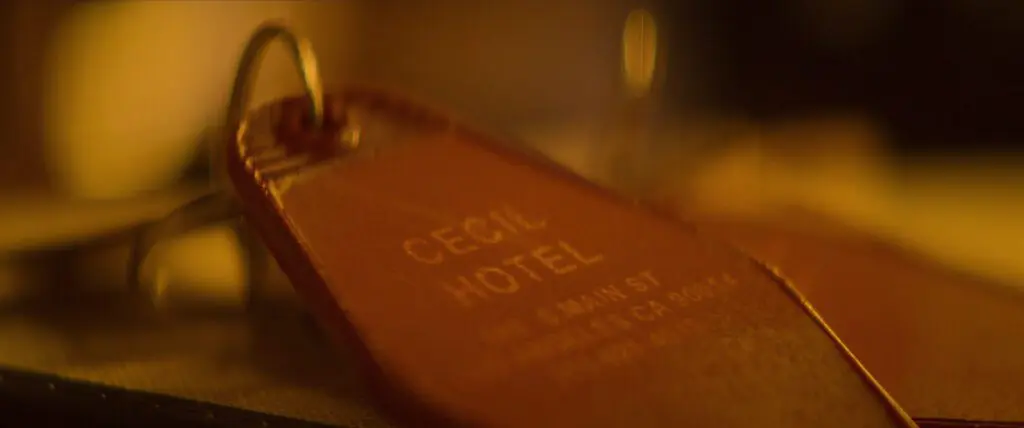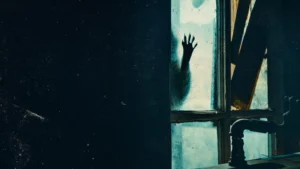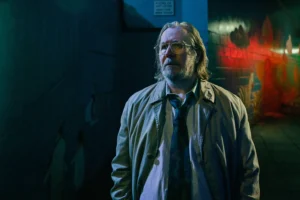Summary
Crime Scene: The Vanishing at the Cecil Hotel feels like a group of conspiracy theorists in a room, happy to be given their platform to spout whatever pixelated finding they can uncover from the web.
This review of Netflix documentary series Crime Scene: The Vanishing at the Cecil Hotel does not contain any spoilers.
If you’ve never heard of Cecil Hotel in Downtown LA, then I suggest that before you watch this Netflix series that you delve down a wormy rabbit hole of Google to see the incredible dark history it has. While watching this documentary series, I kept wondering to myself, “Why wasn’t it shut down?” Of course, it is shut now, and apparently going through millions of dollars of renovations; for a building that has harboured serial killers (Richard Ramirez, the Night Stalker) and every crime imaginable, it’s surprising it lasted nearly 100 years erected, like a pool of evil and distress.
And as Crime Scene: The Vanishing at the Cecil Hotel suggests, it’s not a paranormal phenomenon that tragedies happen at this hotel — it’s the location, facing itself across from Skid Row, an area of extreme poverty; rather than politicians dealing with the issue, they let it fester and become a crime zone, with many homeless people taking refuge in the residential rooms at the hotel. There’s plenty of background given to this mythological-feeling hotel, and it’s incredible how it has become an infamous tourist spot — a thing of legend, even during its mysterious renovation (rumoured to be reopening in August 2021).
Netflix’s Crime Scene: The Vanishing at the Cecil Hotel centres on one of its most mysterious deaths — young woman Elisa Lam. What makes this case compelling is that Elisa had an absorbing personality online — her Tumblr was full of hope and implied despair; she sounded like a hopeless romantic ready to embark on the world and experience as much as possible. I think that’s why so many web sleuths were drawn to her; so of course, when she disappeared inside the hotel with barely a trace, this became an internet sensation.
One of the main problems with the documentary series is that even today, Elisa Lam’s death feels empty; there’s no real concrete answer, and that feeling emanates in this series — it attempts to draw strength from the unknown, rather than bask in new possibilities. The docuseries journeys the viewers down plenty of rabbit holes, supported by the hotel staff, the investigators and the internet detectives at the time. It’s conspiracy-filled, and rather than bringing an ultimate objective, it instead ties itself to all the investigatory shortfalls and non-answers. Crime Scene: The Vanishing at the Cecil Hotel feels like a group of conspiracy theorists in a room, happy to be given their platform to spout whatever pixelated finding they can find from the web.
I would have liked to know more about Elisa Lam; she seems to have had a multi-faceted personality. The documentary series would have benefited from honouring the young woman, rather than becoming a mouthpiece for everything we could have found on Wikipedia. The most interesting element of the series is the elevator video, where Elisa was last recorded, and how it trended on the internet fairly quickly. But after that spooky slice of evidence, it then delves down rabbit hole after rabbit hole, giving away too much voice to web sleuths. This is not an agenda against internet investigators, but there is an argument in this series that a constant obsession of forums and Reddit threads can be seen as unhealthy; “gathered” evidence is argued as fact, and it feels like the internet disrespectfully overruled the investigator’s findings.
But for those interested in this bizarre tourist spot, Crime Scene: The Vanishing at the Cecil Hotel may hit the spot. Unfortunately, I felt it bounced around way too much for a four-part-series.
Additional reading:
- Top 50 Highest Rated Netflix Series of All Time
- Crime Scene: The Times Square Killer Review
- Crime Scene: The Texas Killing Fields Review




